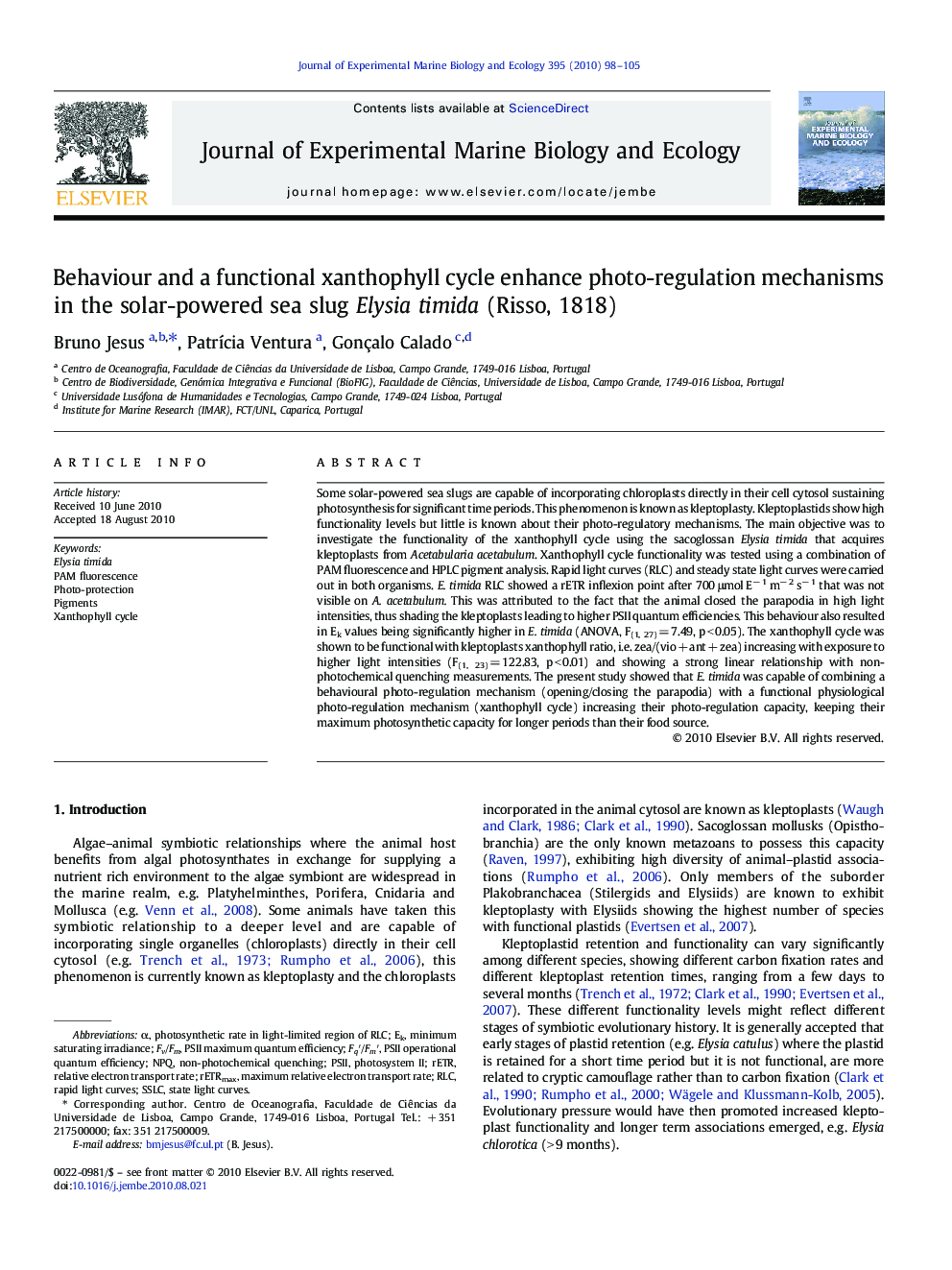| Article ID | Journal | Published Year | Pages | File Type |
|---|---|---|---|---|
| 4396506 | Journal of Experimental Marine Biology and Ecology | 2010 | 8 Pages |
Some solar-powered sea slugs are capable of incorporating chloroplasts directly in their cell cytosol sustaining photosynthesis for significant time periods. This phenomenon is known as kleptoplasty. Kleptoplastids show high functionality levels but little is known about their photo-regulatory mechanisms. The main objective was to investigate the functionality of the xanthophyll cycle using the sacoglossan Elysia timida that acquires kleptoplasts from Acetabularia acetabulum. Xanthophyll cycle functionality was tested using a combination of PAM fluorescence and HPLC pigment analysis. Rapid light curves (RLC) and steady state light curves were carried out in both organisms. E. timida RLC showed a rETR inflexion point after 700 μmol E− 1 m− 2 s− 1 that was not visible on A. acetabulum. This was attributed to the fact that the animal closed the parapodia in high light intensities, thus shading the kleptoplasts leading to higher PSII quantum efficiencies. This behaviour also resulted in Ek values being significantly higher in E. timida (ANOVA, F(1, 27) = 7.49, p < 0.05). The xanthophyll cycle was shown to be functional with kleptoplasts xanthophyll ratio, i.e. zea/(vio + ant + zea) increasing with exposure to higher light intensities (F(1, 23) = 122.83, p < 0.01) and showing a strong linear relationship with non-photochemical quenching measurements. The present study showed that E. timida was capable of combining a behavioural photo-regulation mechanism (opening/closing the parapodia) with a functional physiological photo-regulation mechanism (xanthophyll cycle) increasing their photo-regulation capacity, keeping their maximum photosynthetic capacity for longer periods than their food source.
